The Tarkiner People – The Tasmanian Aboriginal Connection
Firstly, we pay respect to the traditional and original owners of the Tarkine, the Tasmanian Aboriginal groups who called this place home… we pay respect to those that have passed before us and acknowledge the traditional custodians of this land.
For 40,000 years the Tarkine has been home to the Tasmanian Aboriginal tarkiner people who inhabited the Sandy Cape region of this island’s wild west coast. The name Tarkine means belonging to, or of the tarkiner. The Aboriginal community know it as (‘tar-keen-nee’) and continue a strong cultural connection to this special place today.
The Tarkine is a wild, spiritual place. It takes its name from an ancient culture. The Tarkiner people, who once occupied the coastal region near Sandy Cape, were one of three Aboriginal tribes on the West Coast from the Pieman River mouth to the Arthur River. Ancient middens, hut sites and other artifacts make this coastline one of the richest human archaeological zones on the planet. These reflect a rich indigenous culture and spirituality which Aboriginal people renew in the Tarkine area today.
George Augustus Robinson, ‘Conciliator’ of the Tasmanian Aborigines, lay awake one night in September 1830. He could not afford to sleep:
‘The chief of the Pieman River aborigines [Wyne] sat at the foot of my bed…preparing his spears with which he purposed destroying me, and whilst hardening them in the fire and straightening them between his teeth, at the same time would leer at me with a savage grin thinking that I was asleep…’
Next morning Robinson survived the attack of the West Coast people only by floating across the Arthur River — pushed by his faithful companion Truganini, who perhaps initiated the tradition of the Arthur River ‘ferryman’.
Wyne’s tribe, the Peternidic, was one of three coastal tribes in the area now known as the Tarkine. The Manegin people occupied the country at the mouth of the Arthur River, and the Tarkiner, from whom the region’s present name is derived, lived near Sandy Cape.
Aboriginal tribal cultures were dynamic. The West Coast people had regular hunting ‘resorts’, such as those near the Thornton River, Sundown Point and Rebecca Lagoon. They quarried a stone called spongolite in the Rebecca Forest for the manufacture of tools, and an underwater ochre deposit at the Welcome River for decorative and possibly spiritual purposes.
The West Coast tribes felt bonded to the land. They knew it intimately. People lived in villages in beehive-shaped bark huts. In their seasonal hunter-gatherer regimes, women dived for crayfish, mussels, abalone and shellfish. By ‘firestick farming’ the plains, the men hunted wallaby, wombats, possums, quolls and emus, kept access paths open and replenished the feed. Ducks, ravens and muttonbirds were caught. Eggs, herbs and fungi were gathered.
Although much knowledge of tribal societies has been lost, elaborate death rituals, the use of amulets for healing and the idea of the soul transcending the body were all recorded. Petroglyph art sites at Mount Cameron West attest to indigenous interest in astrology, possibly even its spiritual significance. Ochre was widely used for decorative and perhaps spiritual purposes. Inter-tribal marriage was common, with established courting rituals. Gifts such as a supply of ochre facilitated access to another tribe’s territory during seasonal migration.
From the early 1800s their hunting and foraging regime put the West Coast tribes at the mercy of European invaders. Bass Strait sealers kidnapped Aboriginal women as wives and slaves. The Van Diemen’s Land Company’s (VDL Co’s) annexation of Aboriginal hunting grounds as sheep pasture was equally brutal. Ian McFarlane makes it clear that, against the VDL Co’s wishes, its local agent Edward Curr pursued a policy of Aboriginal genocide.
Countless indigenous Tasmanians were murdered by Europeans in the space of a few years, decimating tribal society.
Still entertaining hopes of reconciliation but under pressure from settlers to end retaliatory Aboriginal attacks, in 1829 Governor George Arthur engaged an ambitious former builder, George Augustus Robinson, to ‘conciliate’ the remaining indigenous people. Robinson appeared benevolent but was increasingly motivated by personal gain. Wyne submitted to the exile offered by Robinson in July 1834, realising that there was no escape from the European invasion. Within nine days he was dead from disease — along with many other Robinson ‘captives’. He remained defiant to the last. One of Wyne’s final gestures was to remonstrate with his countrymen for not killing Robinson’s Aboriginal party when they had the chance.
Ancient traditions remain alive in the Circular Head Aboriginal community today. For example, the flowering of the blackwood (Acacia melanoxylon) trees represents seasonal change, a signal that the muttonbirds are arriving and the lobsters have borne their young. Where once Aboriginal people hunted to live, the wider Circular Head community — indigenous and non-indigenous — enjoys the Tarkine coast and the Arthur River catchment as a recreational fishing and camping resort. Countless ancient Aboriginal middens, hut sites and artifacts make this coastline one of the richest archaeological zones on the planet. Protecting such sites with their spiritual connection for Aboriginal people is a challenge for today and the future
See and Do in the North West
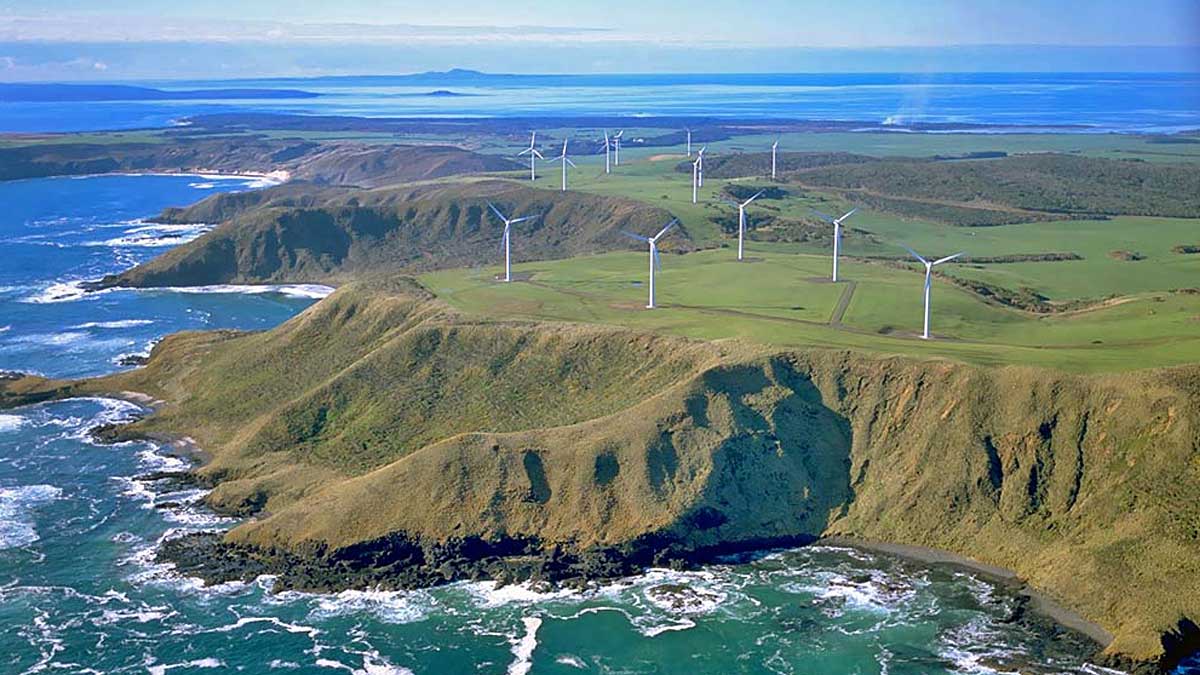
Woolnorth Tours
By land or by air, Woolnorth is a magical place to visit. From a tragic indigenous history to today’s ultra modern green energy wind turbines, Woolnorth Tours is the only operator working with Van Diemen’s Land Company and VDL Farms to enable exclusive public access. Stand on spectacular Cape Grim, turn your face to the wind and breath in the cleanest air in the world. This is recorded at the Baseline Air Pollution Station that is situated on the cliffs of the Cape Grim coastline. Bookings essential.
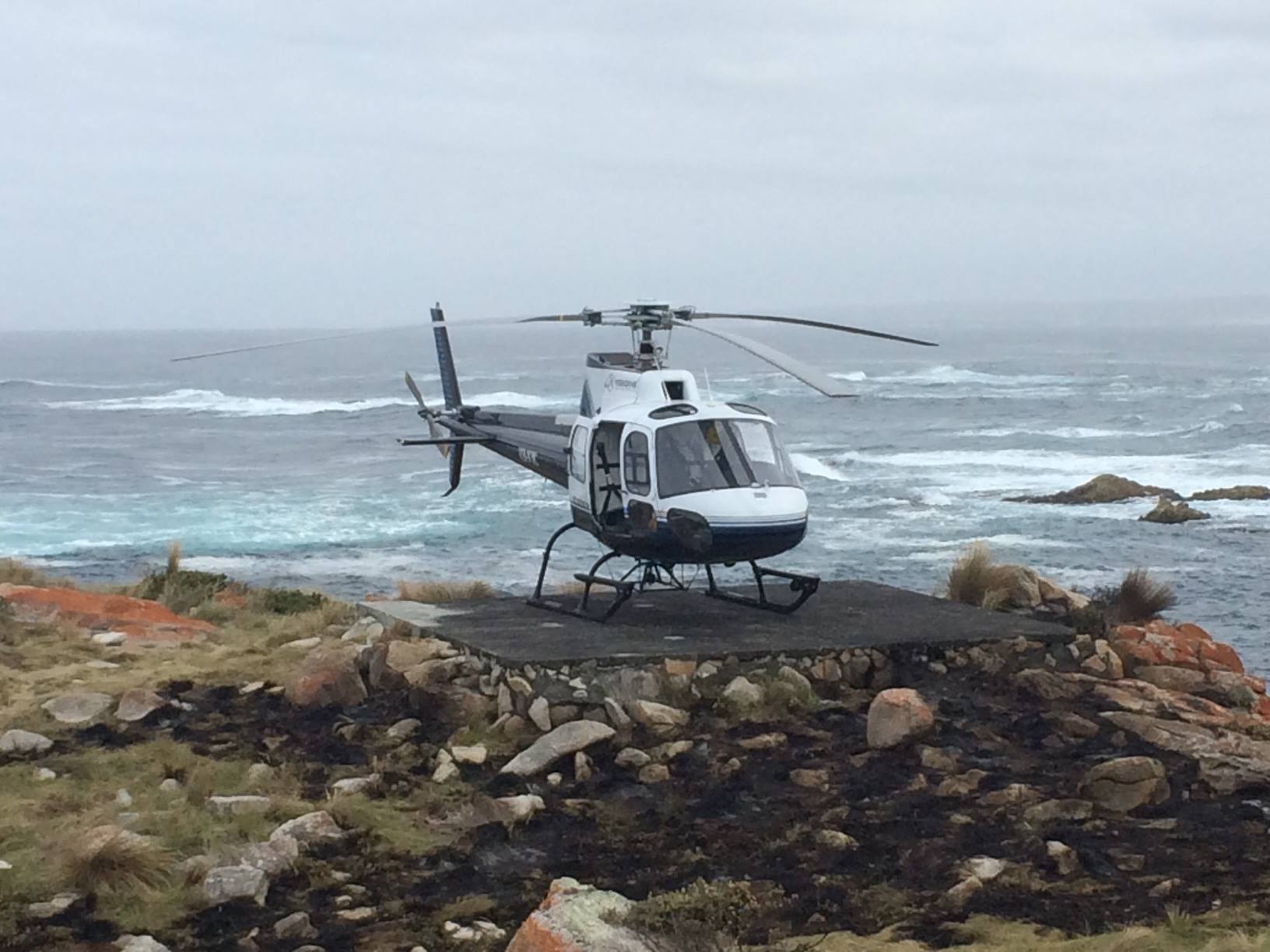
Osborne Heli Tours
Osborne Heli Tours operate a variety of scenic flights and experiences from the picturesque seaside village of Stanley. Stunning views from above await as you follow the rugged coast to Woolnorth and Cape Grim or head inland to witness the beautiful Tarkine forests and the winding Arthur River.
Osborne Heli Tours is ready for charter across the whole state with landing sites at wineries, distilleries, airports and accommodation. Bases are open daily with a fleet of helicopters available for flights out of Stanley and Port Arthur.
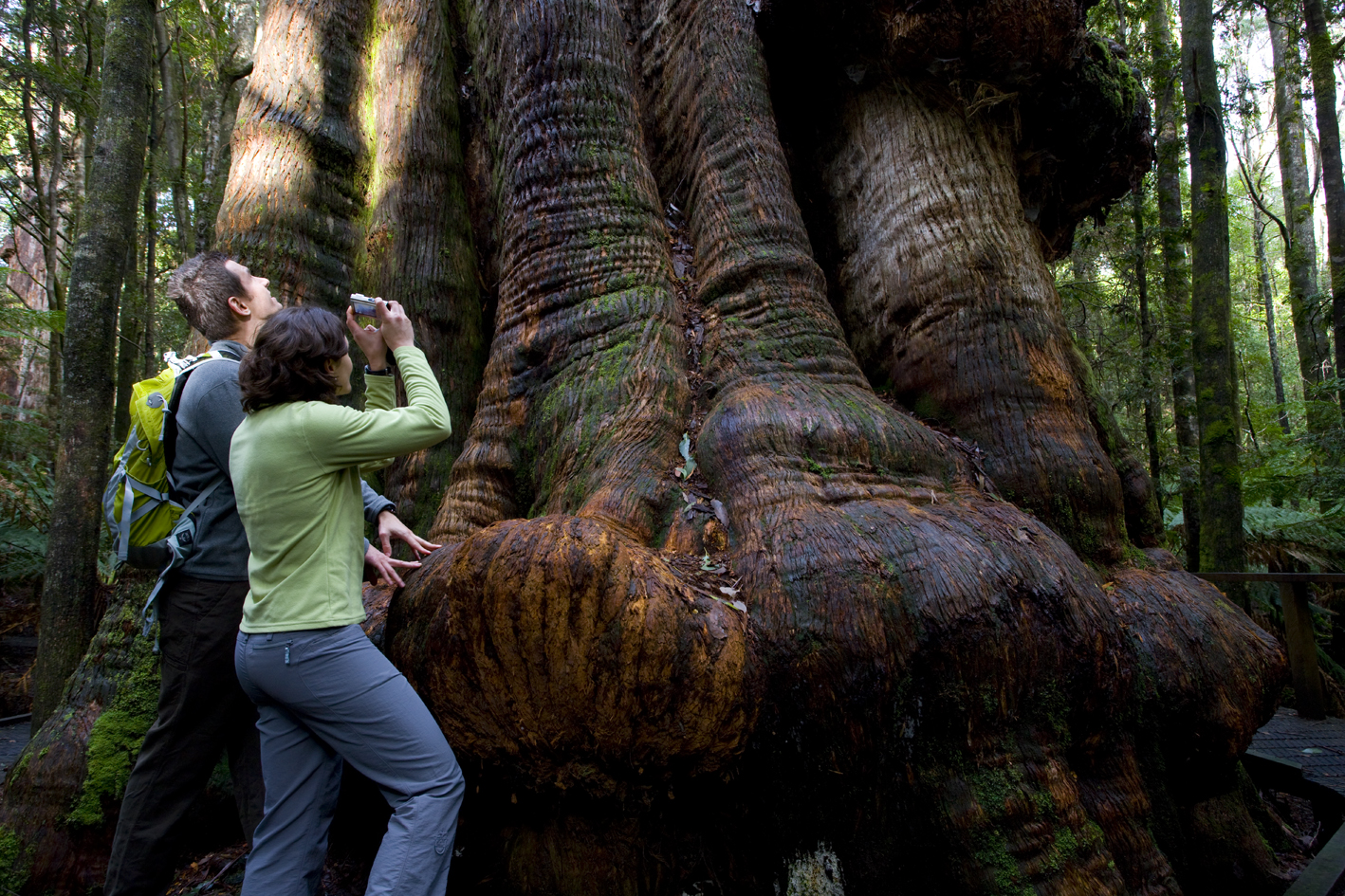
Dip Falls and the Big Tree
A short but steep walk leads to the base of the magnificent Dip Falls. Or across the bridge, a level walk and viewing platform provides unsurpassed views of the top of the falls. The water flows over hexagonal basalt columns, formed from the cooling of this volcanic rock. Opposite the car park, a gravel path will take you to the remains of an old boiler which powered a mill for sawing blackwood in the 1920s.
A further kilometre along the road from Dip Falls, the Big Tree grows amongst spectacular wet eucalypt forest. The boardwalk around the base of this tree lets you get up close to one of the many forest giants of the Tarkine.
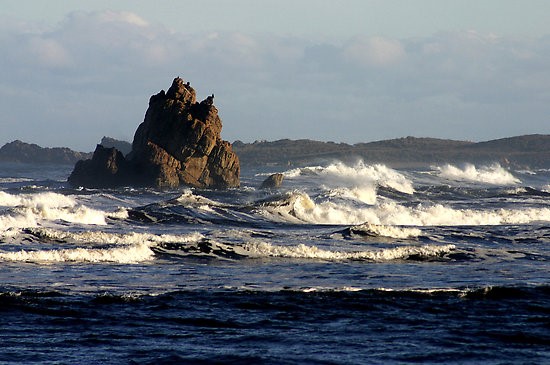
Rocky Cape National Park
Rocky Cape National Park or ‘Tangdimmaa’ is located at Rocky Cape, about a 15 minutes drive from Stanley. The park has great significance to the Tasmanian Aboriginals called the Rar.rer.loi.he.ner people, who once made their homes in the sea caves situated along the coastline. There are several walks throughout the park, ranging from 50 minutes up to 6 hours. Barbeque facilities are available as well as toilets and information booths. A National Parks Pass is required. Parks & Wildlife 0364 58 1480 www.parks.tas.gov.au
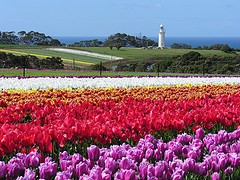
Table Cape Lighthouse
The Lighthouse looms large on the cliff edge of Table Cape, which juts out onto the waters of Bass Strait, just 5 kms from Wynyard. Gaze across the unforgiving ocean, see the colourful tulip fields and poppy crops surrounding the lighthouse during September and October. Enjoy fantastic seabird and whale viewing opportunities during migration periods. Enjoy the incredible views towards Rocky Cape in the West and Low Head in the East. Watch out for howling winds when the weather systems flow by!
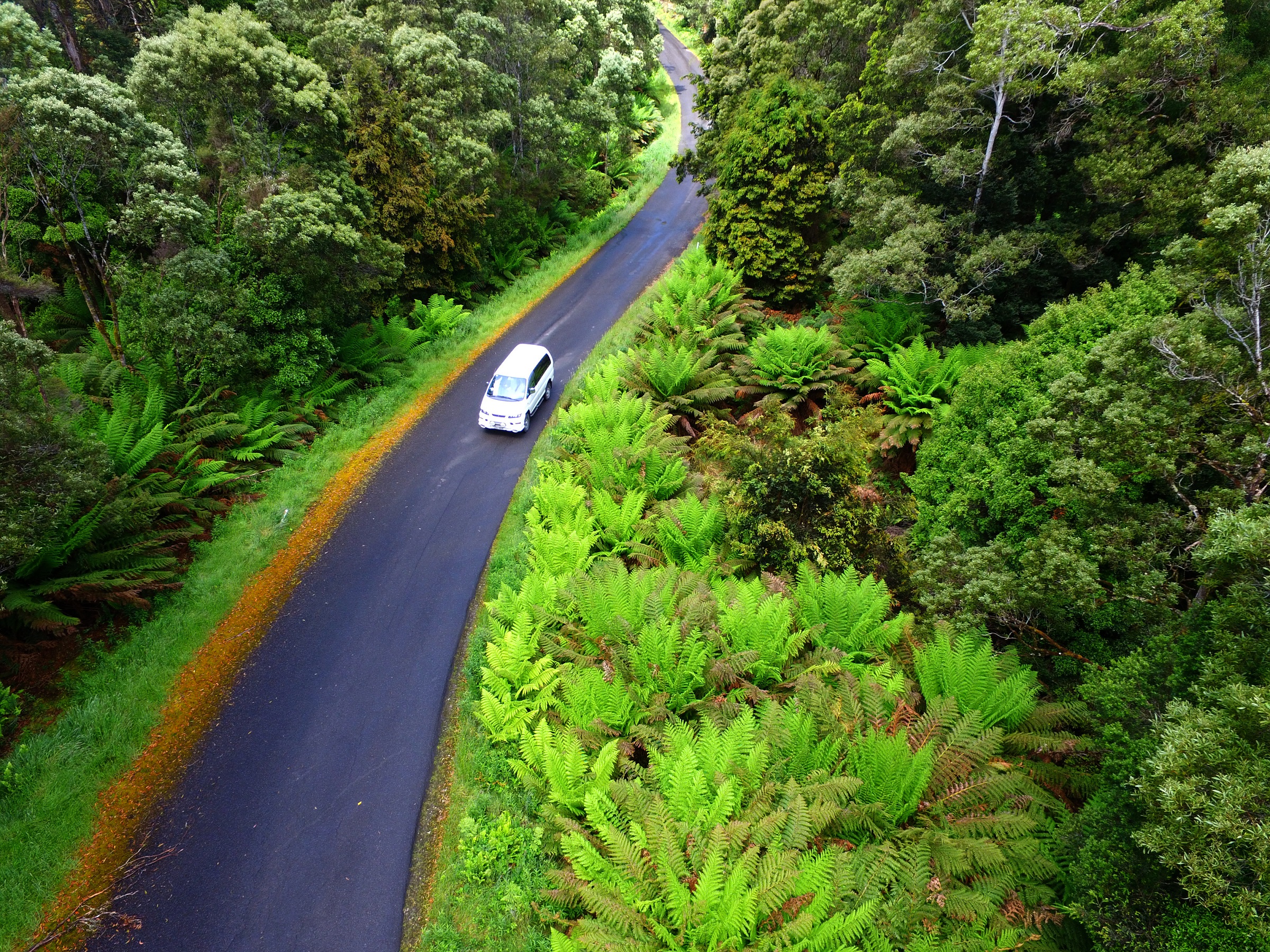
the 'Tarkine' Drive
The Tarkine Drive introduces you to unique flora and fauna, globally significant rainforests, wild river landscapes and dramatic coastlines.
The Tarkine Drive will guide you through the dramatic and breathtaking wilderness of Tasmania’s Tarkine region. The Tarkine is richly woven in human history and natural beauty. There’s plenty to do in the area, whether it is admiring the splendour of tall trees and graceful rivers in silent rainforests, or getting up close to a curious cow. The best way to explore the richness of the Tarkine is by taking a journey of discovery on the north-west section of the Tarkine Drive and South Arthur Drive. There’s no better way to enjoy the sights: pretty coastal hamlets, rich agricultural land, cool temperate rainforest and wild places. Your journey can be as relaxed or as energetic as you like. This drive allows easy access to the northern fringe of the Tarkine covering the State’s north-west corner. Travelling through forest reserves and working forests. Picnic facilities and forest walks are provided at both the Julius and Milkshake Forest Reserves, while other places include the Sumac Lookout and the picturesque walk through Lake Chisholm Forest Reserve to a beautiful sinkhole lake. This well-signed drive offers a variety of opportunities from river fishing, canoeing, and camping to walking and barbeques.
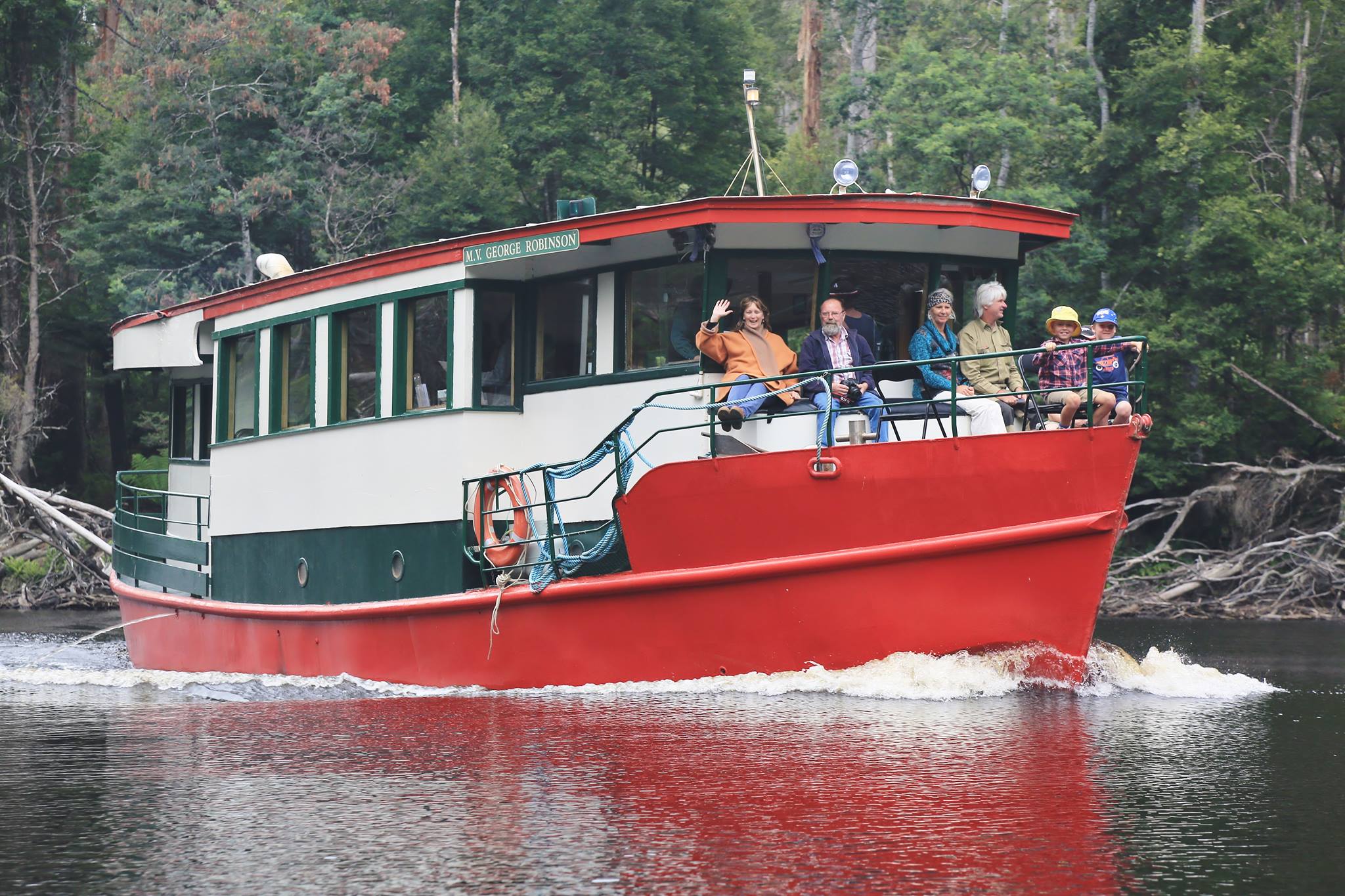
Arthur River Cruise
On the border of the Tarkine is the town of Arthur River, which is the starting point for beach and forest explorations, wildlife viewing, bird-watching and cruises aboard the MV Reflections or the MV George Robinson. There are facilities for camping, picnics and barbecues. Surrounded by dense rainforest and named after the wild river that runs from the mountains to the sea, Arthur River is a great base for exploring the Tarkine wilderness. The tiny coastal township of Arthur River is the northern entry to the Western Explorer (roadway) that leads from the coast to the beautiful Tarkine wilderness area. Take a cruise on the Arthur River through to the Frankland River deep inside the Tarkine Wilderness or hit the coast on a guided beach or bushwalk and look out for white-bellied sea eagles, platypus, orange-bellied parrots, kingfishers and Tasmanian devils along the way. On the coast near the mouth of the Arthur River is a plaque titled The Edge of the World and sometimes it feels like it. This coastline is beautiful, remote and regularly lashed by the winds of the Roaring Forties with the combination of ocean currents and river flow creating a churning effect at the river’s mouth that deposits ancient logs on the beach.
Our Producers & Suppliers
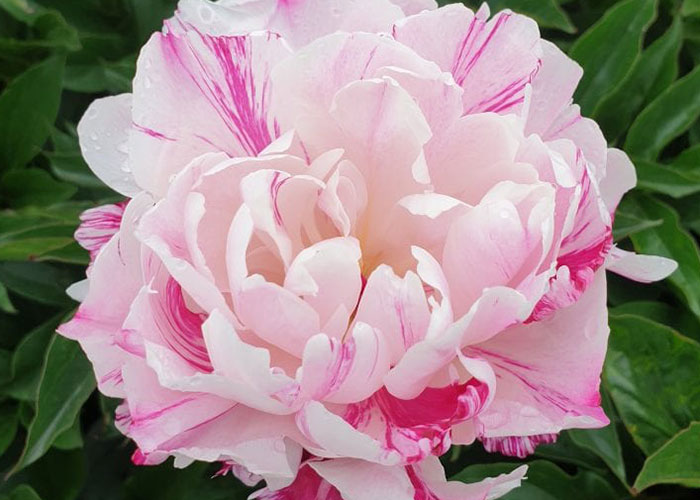
Gateforth 'Peony' Farm
The Medwin family grow high quality peonies for cut flowers and root stock. They also grow Hydrangeas, Brunia Albiflora and Snowberries. Tasmania’s cool, mild spring is perfect for slow ripening that delivers an ‘A’ grade peony flower. The farm was established in 1842 and seven generations of the Medwin family have worked there. They’ve seen many changes in the range of livestock and crops grown and in farming practices, throughout the generations. The farm is not open to the public, but they may have their beautiful cut peonies for sale @the Brown Dog in Church street, Stanley when in season.
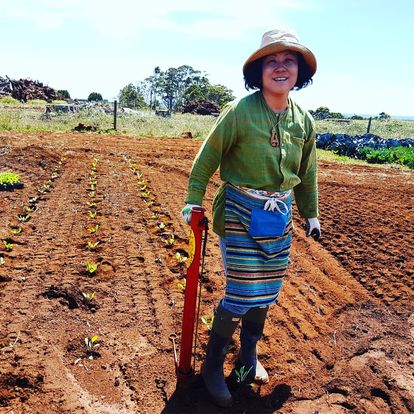
KIMCHIME TASFRESH ORGANIC FARM
KimchiMe Tasfresh Organic Farm is operated by Sue and Tom Glynn at Wiltshire, where they grow organic vegetables, which Sue makes into kimchi. Sue Glynn was born and raised in Seoul, Korea and is considered a kimchi connoisseur. KimchiMe is Tassie-grown, fresh, organic, vegan-friendly, gluten-, dairy-, and pesticide-free with live probiotics. The product range includes classic kimchi, fermented drinks, and probiotic shots – nutritious and nurturing for gut health. Sue shares her extensive knowledge at Kimchi Making Workshops and her products are available at their farm gate shop.
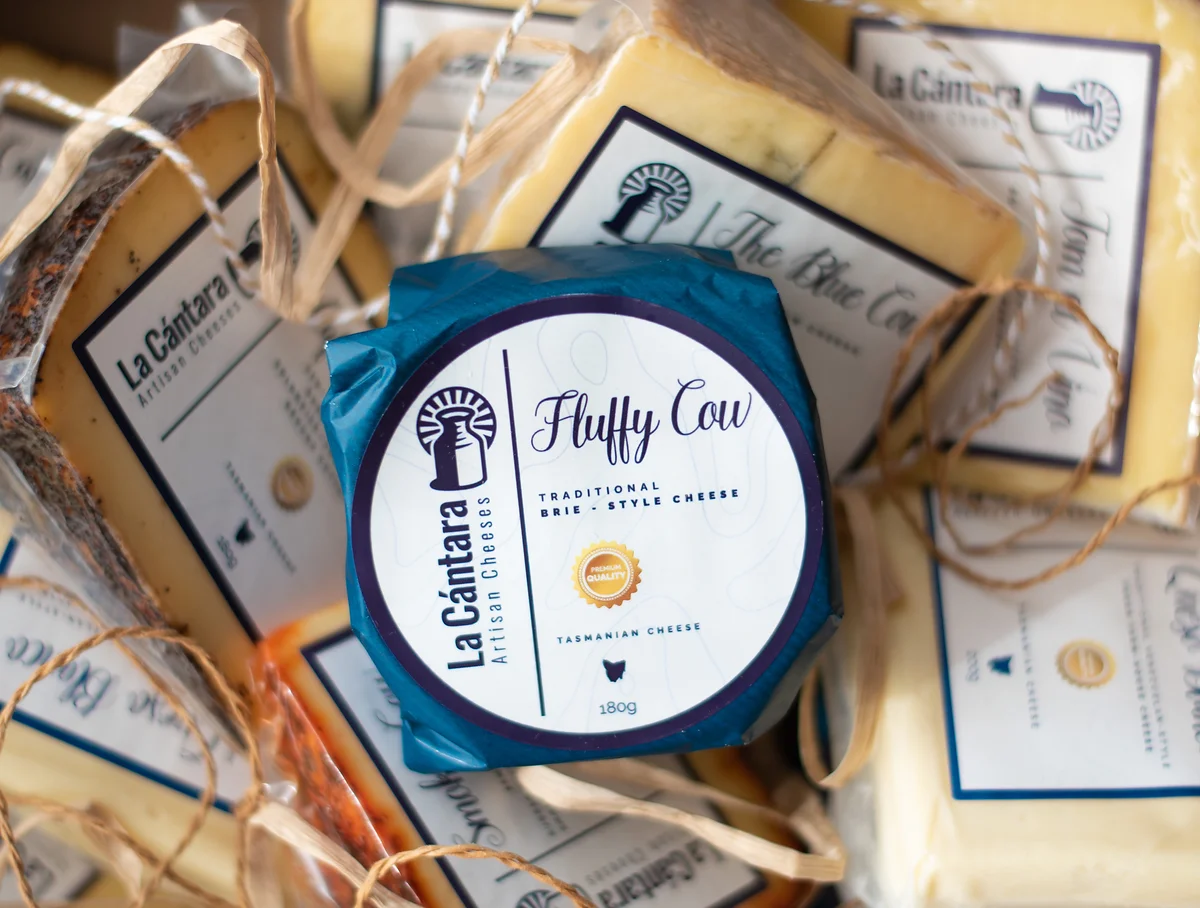
La Cantara Artisan Chees
Venezuelan style and European style artisan cheese, made from 100% Tasmanian milk, from a state-of-the-art robotic dairy, using sustainable farming practices. Their ethos is focused on animal welfare and customer satisfaction. Their cheese is made in a small processing plant attached to the robotic dairy at Duck River Meadows Dairy. Visitors can take a tour of the dairy and see some of the cheese making processes from milking to aged cheddar. Discover how two Venezuelan vets ended up in Smithton Tasmania, making remarkable cheese. Their range includes , Fluffy Cow, Blue Cow, Smokey Cow, Tom al Ron (rum soaked) and Café con Leche (coffee rubbed) cheese. You can taste their full range at Duck River Meadows Dairy, or purchase at specialty outlets.
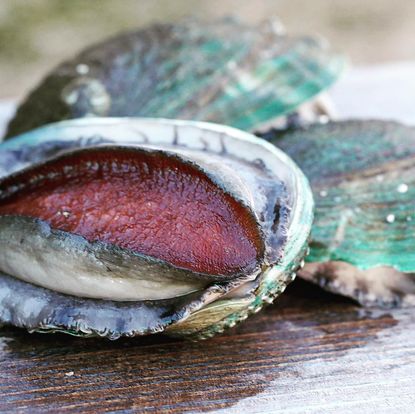
Three Friends Abalone
Three Friends Abalone is grown in the cold pristine water of the Southern Ocean on the west coast of Tasmania, where the cleanest air in the world, and the cold crisp water straight from Antarctica, produce the highest quality abalone in the world. Produced by JST Abalone in Stanley: the result of three Australian guys (Joel Gilby, Shane Smith and Tom Peddie) with a passion for producing high-quality abalone; they are the last owner operators in Australia. JST transformed barely operational infrastructure into a clean, sustainable, free-flowing environment, bringing pristine cool Southern Ocean waters in to nourish delicious Tasmanian abalone.
Look out for their products on local menus.
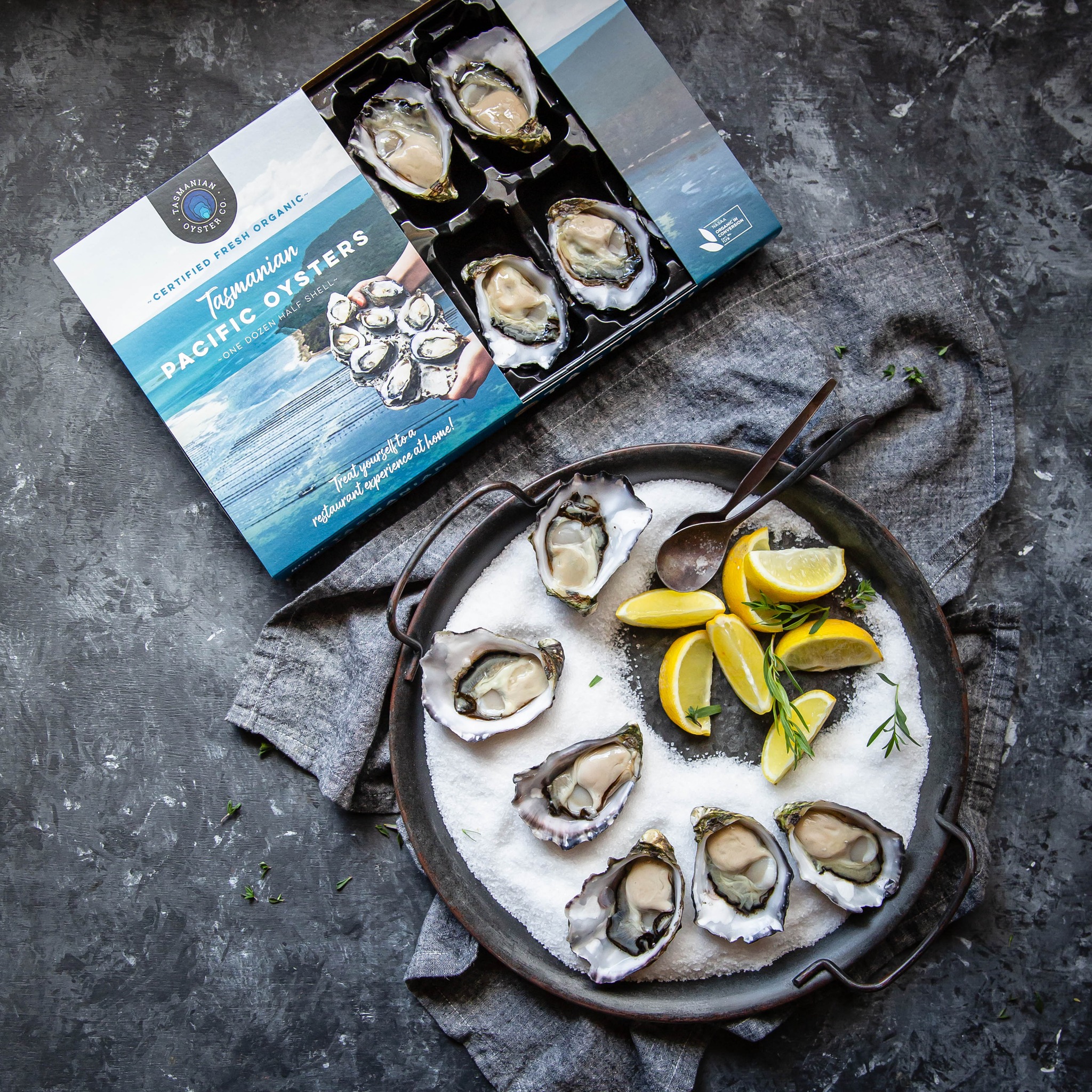
Tarkine Fresh Oysters
Tarkine Fresh Oysters are plucked from the pristine, nutrient rich waters of Tasmania’s rugged North West Coast and delivered to you straight from the sea. Their oysters are harvested fresh from Duck Bay in Smithton, Tasmania where there’s a 3.5m tidal rise and fall, providing the perfect environment for growing sensational oysters.
Smithton has some of the highest rainfall in Australia’s south, providing a constant supply of nutrient rich water all year round. These oysters have a large, sweet abductor muscle with white flesh. Tarkine Fresh Oysters continually strive to provide the freshest and most premium oysters possible; the highest meat to shell ratio, consistency, and an oyster that travels well on its way to market.
Most of their oysters are exported but in 2017 they opened a small café and retail outlet at the Smithton farm, because they never get tired of hearing from customers that “Tarkine Fresh Oysters are the best they’re ever tasted.”
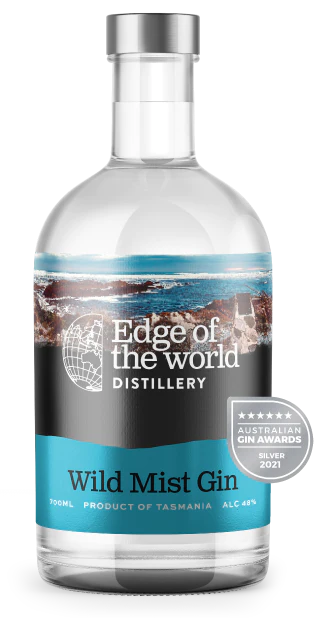
Edge of the World Distillery
We are a family-based boutique distillery which commenced production in 2019. Perched on the West Coast of Tasmania, we are battered by the Roaring Forties winds which travel from Patagonia South America, more than 16,000km away, untouched by land until they reach us. The winds deliver fresh air, sea mist and pure rainwater from which we craft our whisky, gin and spirits. We make Wild Mist Gin, melding coastal and wilderness flavours into a fresh but complex spirit. Lemon myrtle, eucalyptus, pepper berry, and saltbush build on a juniper base, featuring our pure salt influenced rain water. Look out for Wild Mist Gin at festival events and local stockists.
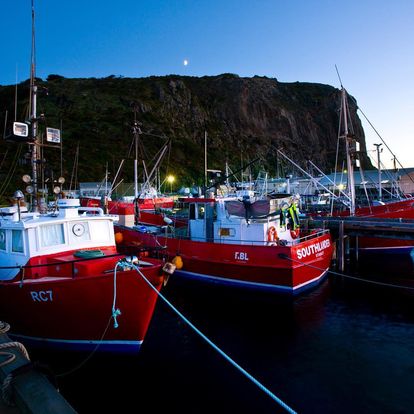
Hursey's Seafoods
We are a family-based boutique distillery which commenced production in 2019. Perched on the West Coast of Tasmania, we are battered by the Roaring Forties winds which travel from Patagonia South America, more than 16,000km away, untouched by land until they reach us. The winds deliver fresh air, sea mist and pure rainwater from which we craft our whisky, gin and spirits. We make Wild Mist Gin, melding coastal and wilderness flavours into a fresh but complex spirit. Lemon myrtle, eucalyptus, pepper berry, and saltbush build on a juniper base, featuring our pure salt influenced rain water. Look out for Wild Mist Gin at festival events and local stockists.
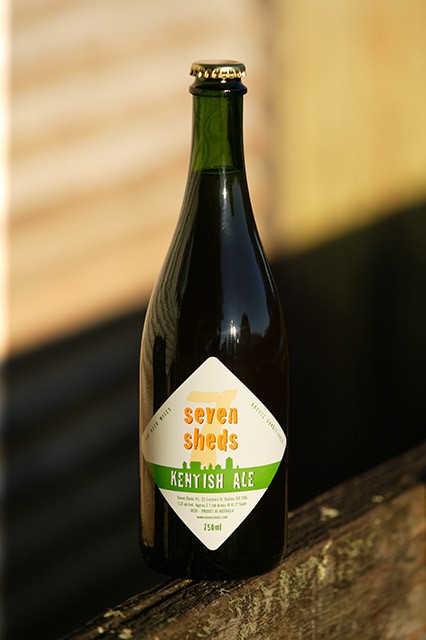
Seven Sheds Brewery
Within easy touring distance Seven Sheds cellar door is a ‘must see’ on day tours out to Launceston, Devonport and Burnie and for visitors travelling to Cradle Mountain. Seven Sheds is owned and operated by Australia’s foremost beer writer Willie Simpson and his partner Catherine Stark. Author of The Australian Beer Companion, The Beer Bible, Amber and Black and Home Brew, Willie turned to brewing commercial batches of hand-crafted beers in his Railton backyard in 2008. The first release Kentish Ale (named after Railton’s local government area) quickly sold out and beer production was ramped up to meet demand. Now there are four permanent beers as well as seasonal brews and the occasional brewer’s reserve to tantalise the tastebuds.

TOP Fish
T.O.P Fish (Tasmanian Octopus Products) is operated by the Hardy family who specialise in the catching, processing and value adding of Tasmanian Octopus “Pallidus”. They are a sustainable fishing business with a large catch area off the coast of Tasmania, between King and Flinders Islands in the roaring forties waters of Bass Strait. Octopus are captured using a specially designed pot for these conditions and species. Nets are not used in the catching of this resource. They actually make the octopus pot their home until they are removed to allow another occupant to take up residency. and processing plant in Stanley. A total of 20,000 pots are set throughout Bass Strait on 150 km of line. Two vessels the “Seafarer” and the “Farquharson”, operated by Bradley and Craig Hardy, pull the octopus lines when favourable weather permits. Marty Hardy runs the Stanley processing plant which produces their own retail ‘pickled Octopus’ brand and supplies steamed and raw product to local restaurants in Tasmania as well as inter-state.
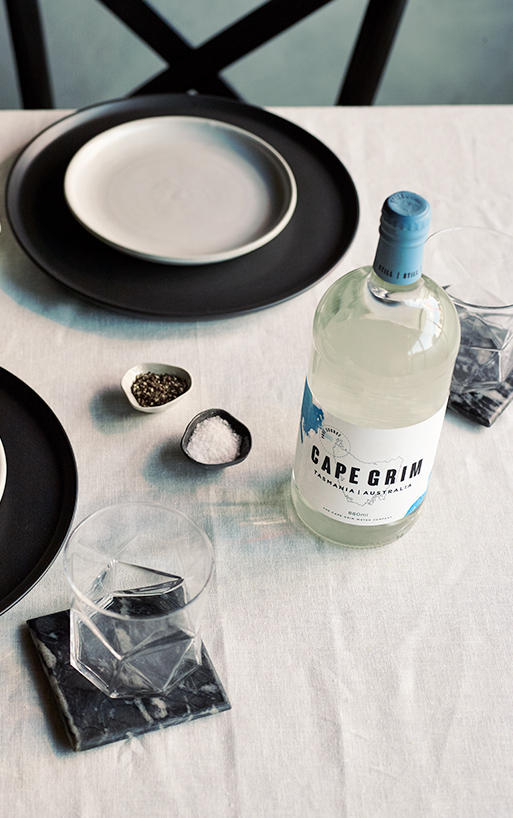
Cape Grim Water
Cape Grim is on the north-western most tip of the Tasmania, monitoring at the Baseline Air Pollution Station at Cape Grim has determined that the air at the Cape is some of the purest in the world. The remoteness and westerly airflow from the pollution free Southern Ocean means the air is free of ‘contaminates’. And from the purest air comes pristine rain drops. It rains on average 187 days of the year at Cape Grim.
Cape Grim Water have been capturing this unique water in Tasmania for over 19 years. They have perfected their process to capture this precious drop. They capture the raindrops before they hit the earth so all that is needed is then to collect and filter. This is different from your regular spring water or bottled water that is collected from the ground. This collection process means that Cape Grim Water requires minimal filtration, meaning it holds the beneficial, naturally occurring minerals that would usually be lost.
“Even the ice you put in it will pollute it.”
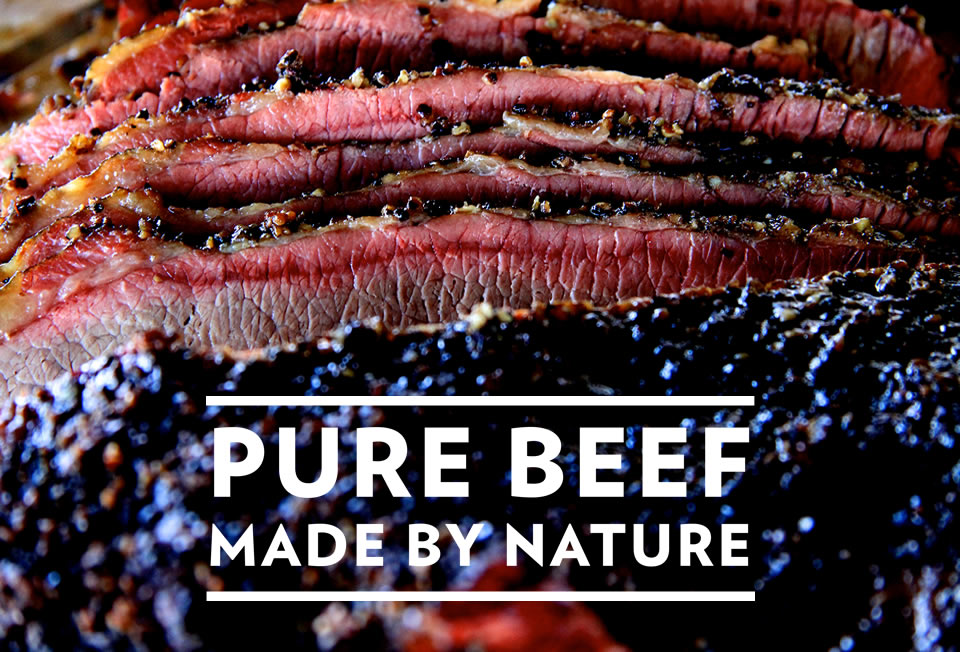
Cape Grim Beef
The ‘Cape Grim’ Difference. Beef that carries the Cape Grim label is consistently in the top 4 of 18 MSA grades. Cape Grim beef is guaranteed to be tender and of the highest eating quality, a true Tasmanian taste sensation. And as required by Tasmanian law, it is completely free of hormone growth promotants.
Product benefits Hormone free, Natural marbling for maximum juiciness British breed beef only, Fed on the cleanest natural grasses, Antibiotic free, GMO free, 100% Grass fed beef, Graded to the four highest MSA tenderness grades.
Our local butcher in Smithton, ‘Perry’s Gourmet Meats’ is a local supplier of the famous Cape Grim brand of Tasmanian natural grass fed beef and formerly has held the title of ‘National Sausage King’.
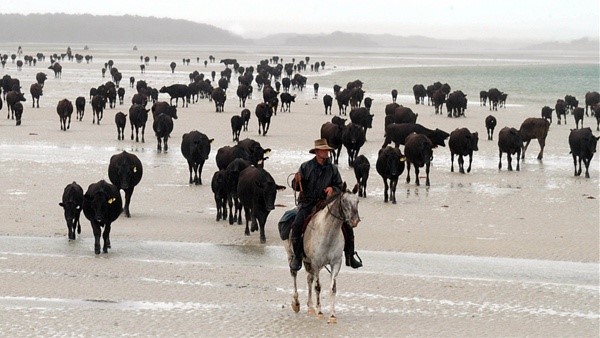
Hammonds Wagyu Beef
In the far NW corner of Tasmania, the Hammond family have been breeding Japanese Fullblood Wagyu cattle on their island property, Robbins Island, for the past 20 years. They run 5,000 Wagyu cattle in the operation which is vertically integrated from “Paddock to Plate”. The cattle are raised on isolated pastures with no supplements, hormones, or antibiotics – as naturally as possible, breathing the cleanest air in the world. The cool climate, salt air, and pristine environment are ideal for raising some of the most tender and best tasting beef in the world. For the first time, the Hammonds are making their Robbins Island beef available as Grass Fed Wagyu – dry aged for maximum tenderness and flavour. Traditionally, Wagyu beef has been produced by grain feeding for long periods of time in Japanese feedlots. The Hammond family has taken a new approach to producing Wagyu beef by not putting the cattle in feedlots, but choosing to raise and finish them in a relaxed island lifestyle where the cattle graze in coastal paddocks in a natural and sustainable way. The result is slightly less marbling, but superior Grass Fed flavour the local grasses and herbs the cattle eat contributing to the “taste signature” of the beef. The fine marbling present in the meat is made up of unique combinations of unsaturated fatty acids that not only melt and tenderize the meat during cooking, but also have a significant influence on the taste and health benefits of the meat. Robbins Island Wagyu has a tender, juicy and enduring taste that you look for when you want to eat beef – not to be forgotten.